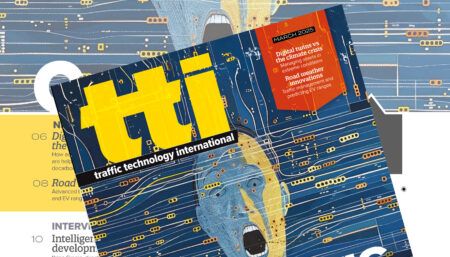The Port Authority of New York and New Jersey (PANYNJ) has become the first public transportation agency in the USA to embrace the Paris Climate Agreement, setting aggressive interim greenhouse gas (GHG) targets that call for a 35% reduction by 2025 and reaffirming the agency’s commitment to an 80% decrease by 2050.
PANYNJ builds, operates and maintains many of the most important transportation and trade infrastructure assets in the USA, with a network of aviation, ground, road, rail and seaport facilities. In 2017, after the Trump administration announced plans to pull out of the Paris Climate agreement, 17 states and territories, including New York and New Jersey, formed the United States Climate Alliance and committed to uphold the objectives of the agreement. The Port Authority has also joined the ‘We Are Still In’ coalition, a leading national alliance formed to help uphold the Paris targets after the USA’s withdrawal from the accords. Using the baseline year of 2006 for measurement of standards, the Authority’s new targets will contribute to GHG reductions in the agency’s direct emissions equivalent to 3.6 billion tons of coal burned annually, and achieve additional reductions related to the use of agency facilities.
The Authority’s actions follow the release of the recent United Nations Intergovernmental Panel on Climate Change (IPCC) report last month that forecasts severe environmental impacts sooner than previously anticipated. The Paris Climate Agreement action and aggressive GHG reduction targets are key elements of the Port Authority’s strategy to improve environmental protection and sustainability measures at its air, tunnel, bridge, port, terminal, rail and World Trade Center facilities. Key measures include:
Clean Electric Vehicles –
36 all-electric shuttle buses at JFK, Newark Liberty and LGA airports; 50% of the Port Authority’s light-duty vehicle fleet, representing 600-750 vehicles, converted to electric; New fast-charging ‘hub’ of 10 stations at JFK, with full recharge in 30 minutes or less; Piloting first-ever electric cargo equipment, in partnership with Maher Terminals, and converting airside equipment to electric at the airports. Energy Efficiency – US$100m to retrofit existing facilities to guarantee savings of equal or greater value; LED re-lamping initiatives at the World Trade Center site, JFK, EWR, Port Authority Bus Terminal, George Washington Bridge and Holland Tunnel. Solar/Renewable Energy Programs – Solar and fuel-cell initiatives across six PA facilities including JFK, LGA, Newark Liberty, New York Stewart International Airport, One World Trade Center and PATH; Targeting development of a 5MW community solar project at JFK offering low-cost renewable energy to local residents.
Other measures include: US$25bn in new airport facilities will incorporate best-in-class sustainability measures and practices; a five-year extension of the Clean Vessel Incentive Program across all port facilities; a request for proposals for offshore-wind support facilities on Authority land; and actively participating with a broad range of leading environmental coalitions to combat climate change.
“While leaders in Washington are in a state of denial about climate change, New York is leading the way forward to reduce carbon emissions and fulfill our contribution to the Paris Agreement targets,” said New York Governor, Andrew Cuomo. “Either we end this problem, or this problem will end us, and the Port Authority’s commitment will be a critical component of the US Climate Alliance’s global fight.”
The Port Authority’s executive director, Rick Cotton, noted, “We are stepping up to reduce our emissions and committing to a leadership role in reducing the agency’s own carbon footprint, and in seeking ways to reduce emission throughout the transportation sector.”




